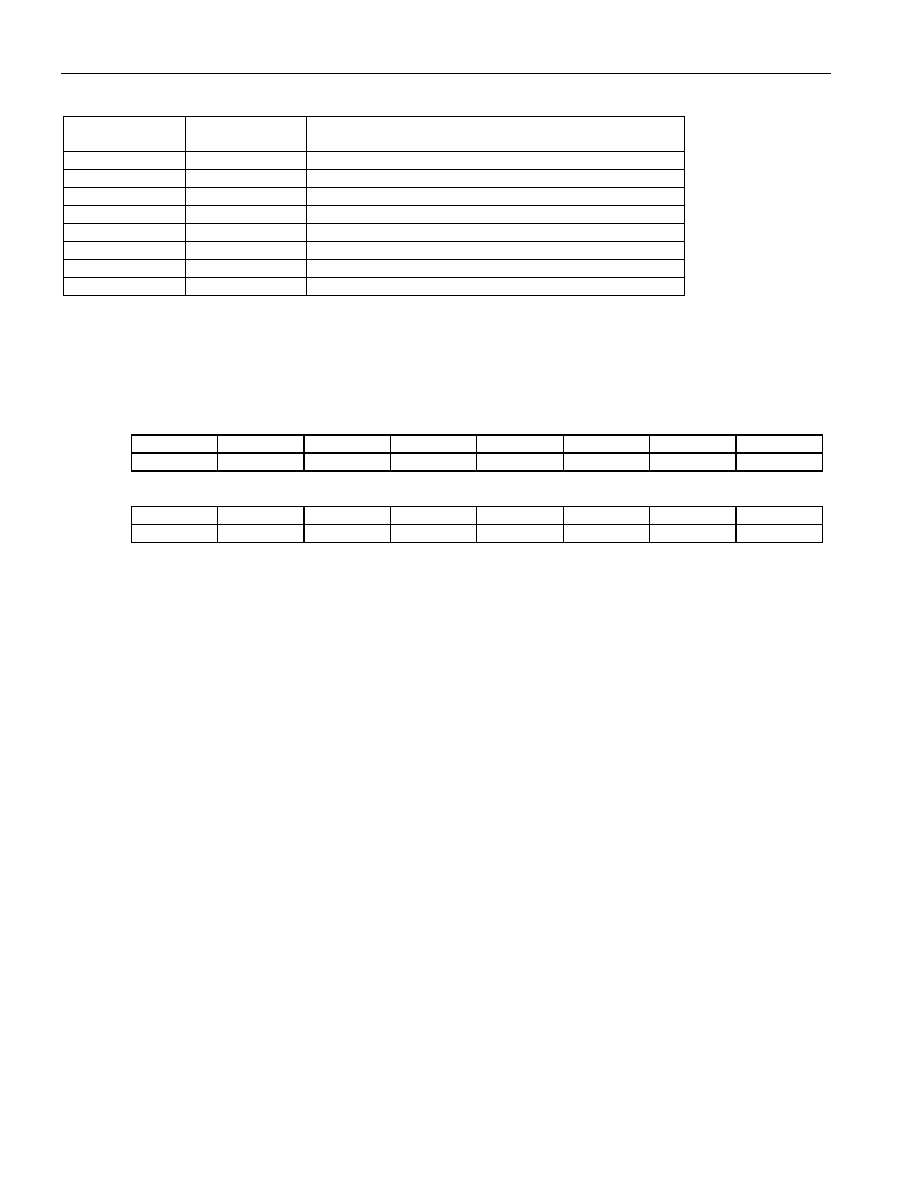- 您現(xiàn)在的位置:買賣IC網(wǎng) > PDF目錄1915 > DS32512N+ (Maxim Integrated Products)IC LIU DS3/E3/STS-1 12P 484-BGA PDF資料下載
參數(shù)資料
| 型號: | DS32512N+ |
| 廠商: | Maxim Integrated Products |
| 文件頁數(shù): | 110/130頁 |
| 文件大小: | 0K |
| 描述: | IC LIU DS3/E3/STS-1 12P 484-BGA |
| 產(chǎn)品培訓模塊: | Lead (SnPb) Finish for COTS Obsolescence Mitigation Program |
| 標準包裝: | 30 |
| 類型: | 線路接口裝置(LIU) |
| 規(guī)程: | DS3 |
| 電源電壓: | 3.135 V ~ 3.465 V |
| 安裝類型: | 表面貼裝 |
| 封裝/外殼: | 484-BGA |
| 供應商設(shè)備封裝: | 484-BGA(23x23) |
| 包裝: | 管件 |
第1頁第2頁第3頁第4頁第5頁第6頁第7頁第8頁第9頁第10頁第11頁第12頁第13頁第14頁第15頁第16頁第17頁第18頁第19頁第20頁第21頁第22頁第23頁第24頁第25頁第26頁第27頁第28頁第29頁第30頁第31頁第32頁第33頁第34頁第35頁第36頁第37頁第38頁第39頁第40頁第41頁第42頁第43頁第44頁第45頁第46頁第47頁第48頁第49頁第50頁第51頁第52頁第53頁第54頁第55頁第56頁第57頁第58頁第59頁第60頁第61頁第62頁第63頁第64頁第65頁第66頁第67頁第68頁第69頁第70頁第71頁第72頁第73頁第74頁第75頁第76頁第77頁第78頁第79頁第80頁第81頁第82頁第83頁第84頁第85頁第86頁第87頁第88頁第89頁第90頁第91頁第92頁第93頁第94頁第95頁第96頁第97頁第98頁第99頁第100頁第101頁第102頁第103頁第104頁第105頁第106頁第107頁第108頁第109頁當前第110頁第111頁第112頁第113頁第114頁第115頁第116頁第117頁第118頁第119頁第120頁第121頁第122頁第123頁第124頁第125頁第126頁第127頁第128頁第129頁第130頁

DS32506/DS32508/DS32512
80 of 130
9.7 B3ZS/HDB3 Decoder Registers
ADDRESS
OFFSET
REGISTER
REGISTER DESCRIPTION
40h
B3ZS/HDB3 Receive Control Register
42h
—
Unused
44h
B3ZS/HDB3 Receive Status Register
46h
B3ZS/HDB3 Receive Status Register Latched
48h
B3ZS/HDB3 Receive Status Register Interrupt Enable
4Ah
—
Unused
4Ch
B3ZS/HDB3 Receive Bipolar Violation Count Register
4Eh
B3ZS/HDB3 Receive Excessive Zero Count Register
Register Name:
LINE.RCR
Register Description:
B3ZS/HDB3 Receive Control Register
Register Address:
n * 80h + 40h
Bit #
15
14
13
12
11
10
9
8
Name
—
Default
0
Bit #
7
6
5
4
3
2
1
0
Name
—
E3CVE
REZSF
RDZSF
RZSD
Default
0
Bit 3: E3 Code Violation Enable (E3CVE).
In E3 mode (PORT.CR2:LM[1:0] = 01), this bit specifies whether the
LINE.RBPVCR register counts bipolar violations or E3 coding violations. Note: E3 line coding violations are defined
in ITU O.161 as consecutive bipolar violations of the same polarity. This bit is ignored in B3ZS mode. See Section
0 = bipolar violations.
1 = E3 line coding violations
Bit 2: Receive BPV Error Detection Zero Suppression Code Format (REZSF).
When REZSF = 0, BPV error
detection detects a B3ZS signature if a zero is followed by a bipolar violation (BPV), and an HDB3 signature if two
zeros are followed by a BPV. When REZSF = 1, BPV error detection detects a B3ZS signature if a zero is followed
by a BPV that has the opposite polarity of the BPV in the previous B3ZS signature, and an HDB3 signature if two
zeros are followed by a BPV that has the opposite polarity of the BPV in the previous HDB3 signature. Note:
Immediately after a reset (RST or DPRST bit high), this bit is ignored. The first B3ZS signature is defined as a zero
followed by a BPV, and the first HDB3 signature is defined as two zeros followed by a BPV. All subsequent
B3ZS/HDB3 signatures are determined by the setting of this bit. Note: The default setting (REZSF = 0) conforms to
ITU O.162. The default setting may falsely ignore actual BPVs that are not codewords. It is recommended that
REZSF be set to one for most applications. This setting is more robust to accurately detect codewords.
See
Section 8.3.6.2.
Bit 1: Receive Zero Suppression Decoding Zero Suppression Code Format (RDZSF).
When RDZSF = 0, zero
suppression decoding detects a B3ZS signature if a zero is followed by a bipolar violation (BPV), and an HDB3
signature if two zeros are followed by a BPV. When RDZSF = 1, zero suppression decoding detects a B3ZS
signature if a zero is followed by a BPV that has the opposite polarity of the BPV in the previous B3ZS signature,
and an HDB3 signature if two zeros are followed by a BPV that has the opposite polarity of the BPV in the previous
HDB3 signature. Note: Immediately after a reset (RST or DPRST bit high), this bit is ignored. The first B3ZS
signature is defined as a zero followed by a BPV, and the first HDB3 signature is defined as two zeros followed by
a BPV. All subsequent B3ZS/HDB3 signatures are determined by the setting of this bit. Note: The default setting
(RDZSF = 0) may falsely decode actual BPVs that are not codewords. It is recommended that RDZSF be set to
one for most applications. This setting is more robust to accurately detect codewords.
See Section 8.3.6.2.
Bit 0: Receive Zero Suppression Decoding Disable (RZSD)
0 = zero suppression (B3ZS or HDB3) decoding is enabled
1 = zero suppression (B3ZS or HDB3) decoding is disabled, and only AMI decoding is performed
相關(guān)PDF資料 |
PDF描述 |
|---|---|
| DS3254N+ | IC LIU DS3/E3/STS-1 144-CSBGA |
| DS33M33N+ | IC MAPPER ETHERNET 256CSBGA |
| DS33R11+CJ2 | IC ETH TXRX T1/E1/J1 256-BGA |
| DS33R41+ | IC TXRX ETHERNET MAP 400-BGA |
| DS33W11DK+ | IC MAPPING ETHERNET 256-CSBGA |
相關(guān)代理商/技術(shù)參數(shù) |
參數(shù)描述 |
|---|---|
| DS32512N# | 功能描述:網(wǎng)絡(luò)控制器與處理器 IC 12-Port DS3/E3/STS-1 Line Interface Unit RoHS:否 制造商:Micrel 產(chǎn)品:Controller Area Network (CAN) 收發(fā)器數(shù)量: 數(shù)據(jù)速率: 電源電流(最大值):595 mA 最大工作溫度:+ 85 C 安裝風格:SMD/SMT 封裝 / 箱體:PBGA-400 封裝:Tray |
| DS32512N+ | 功能描述:網(wǎng)絡(luò)控制器與處理器 IC 12-Port DS3/E3/STS-1 Line Interface Unit RoHS:否 制造商:Micrel 產(chǎn)品:Controller Area Network (CAN) 收發(fā)器數(shù)量: 數(shù)據(jù)速率: 電源電流(最大值):595 mA 最大工作溫度:+ 85 C 安裝風格:SMD/SMT 封裝 / 箱體:PBGA-400 封裝:Tray |
| DS32512NA2 | 制造商:Maxim Integrated Products 功能描述:DS32512 X12 DS3/E3 LIU REVA2 IND - Rail/Tube |
| DS32512NW | 功能描述:網(wǎng)絡(luò)控制器與處理器 IC RoHS:否 制造商:Micrel 產(chǎn)品:Controller Area Network (CAN) 收發(fā)器數(shù)量: 數(shù)據(jù)速率: 電源電流(最大值):595 mA 最大工作溫度:+ 85 C 安裝風格:SMD/SMT 封裝 / 箱體:PBGA-400 封裝:Tray |
| DS32512W | 功能描述:網(wǎng)絡(luò)控制器與處理器 IC RoHS:否 制造商:Micrel 產(chǎn)品:Controller Area Network (CAN) 收發(fā)器數(shù)量: 數(shù)據(jù)速率: 電源電流(最大值):595 mA 最大工作溫度:+ 85 C 安裝風格:SMD/SMT 封裝 / 箱體:PBGA-400 封裝:Tray |
發(fā)布緊急采購,3分鐘左右您將得到回復。